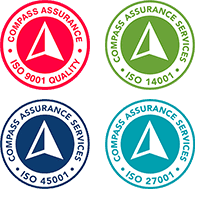While many things have evolved in the world of change management over the past few decades, one thing has remained constant – executives must be the ones leading the charge.
When undergoing any organisational change initiative, key contributors to the success of the change is the executive level. Given their influential role in making a successful change, it is really important that senior management are as active and visible as possible throughout the entire change initiative.
The biggest obstacle to success
Despite it being well known for decades that executives are crucial to successful organisation change, one of the biggest obstacles today when facing a change is the lack of effective change sponsorship from senior management.
We’ve witnessed it ourselves time and time again; executive sponsors were inactive or invisible, not spread across the right areas of the businesses, not aligning other management and leaders around the change and wavering in their support.
The result? This ineffective executive sponsorship resulted in more resistance and slower progress toward realising the organisation’s desired results for the change.
Executive involvement and timely change management activities
Research indicates that starting change management strategies and activities early in a change initiative’s lifecycle has a significant positive impact on the outcomes of the initiative.
From these early stages, right through to completion, there are two people in the organisation employees want to hear from about a change initiative:
- the person they report to
- a leader at the top.
This is because an organisation will always look to its leaders - executives and senior management -to play an essential role in times of change. Employees need these leaders to be visible sponsors of change and to demonstrate why change is necessary. Essentially, leaders must provide the authority and credibility necessary for successful change.
Communicate regularly and directly
However, executives and senior management are not only impactful to the success of change initiatives by leading by example. They also need to play a very active role in driving change by communicating regularly and directly to employees about why a change is needed.
Leaders are the preferred senders of messages about the business reasons for change, as well as the risks or costs of not changing. An effective executive sponsor legitimises the need for change within the organisation and sets the prioritisation of change through direct communication and engagement with every impacted employee.
And finally? Don't disappear!
Additionally, executives and senior management must not disappear once they’ve attended the kick-off meeting for a change initiative. Their sustained presence is vital to build and maintain momentum for a change, and to ultimately achieve the desired results and success.
To embracing change,
Age.

 Back
Back
